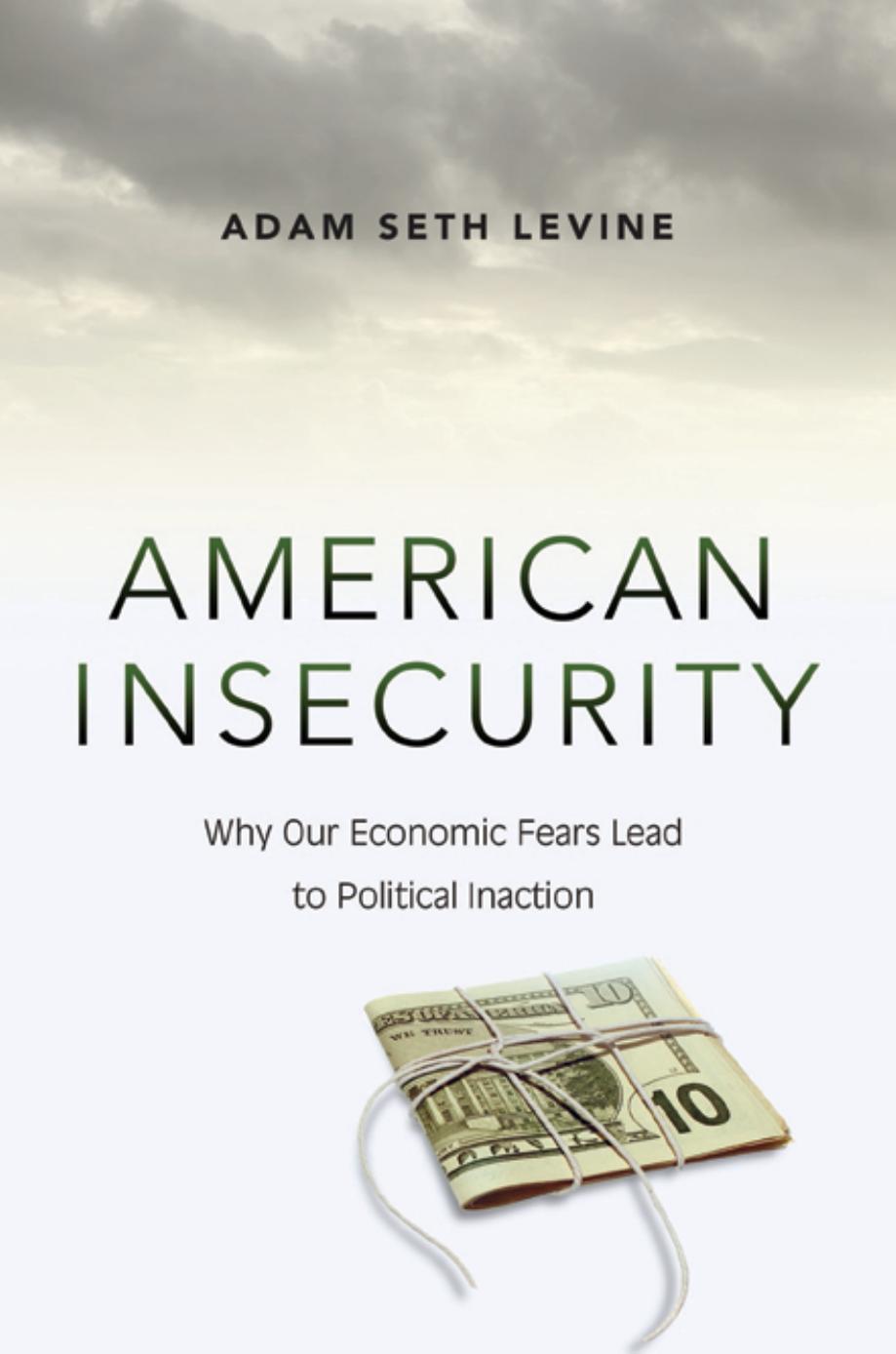American Insecurity by Levine Adam Seth;

Author:Levine, Adam Seth;
Language: eng
Format: epub, pdf
Publisher: Princeton University Press
Published: 2014-12-28T16:00:00+00:00
HEALTH CARE COSTS FIELD EXPERIMENT
The experiments presented in this chapter so far paint a relatively consistent picture of how different types of people respond when organizations try to mobilize them based on economic insecurity. The data on the considerations brought to mind when people made their decisions also provide some important clues about the underlying mechanism. For the experiments involving monetary donations, the fact that people were given an endowment at the beginning ($10 in the U.S. PIRG experiment, $15 in the ACSCAN experiment) helps rule out a lack of objective resources as an underlying cause for the observed political inaction. At the same time, it also highlights one potential criticism of these experiments, which is the fact that they did not take place in an environment that more closely mimicked how people receive political requests in the real world. People did not receive these requests in their mailboxes (or via email or text message), and they did not have to spend any money out of their own pockets. Some readers might understandably wish to see what happens when people are in a more naturalistic setting.
In March 2012 I conducted a direct-mail field experiment in which I partnered with the Ithaca Health Alliance (IHA), a local nonprofit organization located in Ithaca, New York. At the time of my experiment IHA had two major components. One was a free health clinic that served un- and underinsured local residents. The other was a series of educational programs on personal health issues as well as policy changes that could affect people’s daily lives. The latter could include public health topics unrelated to financial constraints, such as workplace safety (e.g., new regulations by the Occupational Safety and Health Administration) and gas drilling (also known as fracking), or it could include topics more directly related to the cost of health care and health insurance (which was especially timely given that New York State was designing its health exchange as part of the Affordable Care Act at this time). As with U.S. PIRG and ACSCAN, IHA faces a choice regarding how much to focus their educational efforts on one type of issue versus another. Even when staffed by volunteers, these educational programs demand administrative resources that are both costly and limited.
Direct-mail fund-raising is often viewed as a dying breed, particularly at the national level.47 Relative to electronic forms of fund-raising, it is expensive and hard to execute quickly. Sending an email to thousands of supporters can be accomplished in an afternoon. Sending a letter takes extra printing, stamping, and mailing time. Nevertheless, for IHA (as well as other groups that do not have a ready-made email list that they can purchase to solicit new supporters) direct mail is a very common form of reaching out to potential new donors, and thus it made sense for me to use it.
For this experiment subjects were randomly assigned to one of two groups. The control group received a fund-raising letter that resembled one IHA had used in the past.
Download
This site does not store any files on its server. We only index and link to content provided by other sites. Please contact the content providers to delete copyright contents if any and email us, we'll remove relevant links or contents immediately.
The Secret History by Donna Tartt(16621)
The Social Justice Warrior Handbook by Lisa De Pasquale(11489)
Thirteen Reasons Why by Jay Asher(7788)
This Is How You Lose Her by Junot Diaz(5769)
Weapons of Math Destruction by Cathy O'Neil(5036)
Zero to One by Peter Thiel(4824)
The Myth of the Strong Leader by Archie Brown(4789)
Promise Me, Dad by Joe Biden(4447)
Beartown by Fredrik Backman(4415)
Stone's Rules by Roger Stone(4415)
How Democracies Die by Steven Levitsky & Daniel Ziblatt(4398)
The Fire Next Time by James Baldwin(4342)
100 Deadly Skills by Clint Emerson(4076)
A Higher Loyalty: Truth, Lies, and Leadership by James Comey(4032)
Rise and Kill First by Ronen Bergman(4012)
The David Icke Guide to the Global Conspiracy (and how to end it) by David Icke(3881)
The Farm by Tom Rob Smith(3872)
Secrecy World by Jake Bernstein(3782)
The Doomsday Machine by Daniel Ellsberg(3730)
